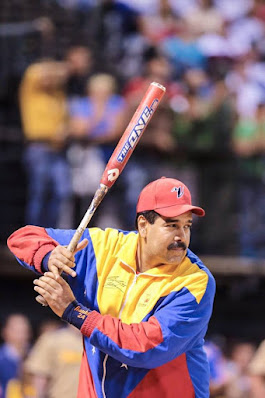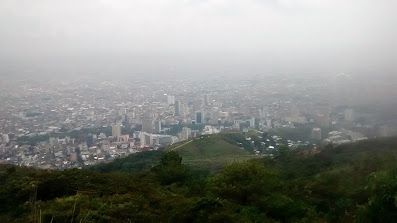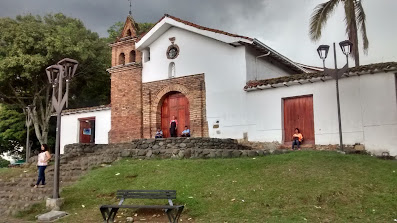The last week in Bogotá saw a fair amount of uproar — and traffic disruption — following the decision by city authorities to ban motorcyclists from carrying male pillion passengers.
The measure, which applies to only certain sectors of the metropolis, is being introduced in a bid to curb (pun not really intended) street crime. You see, there is a chance in these parts that two men riding a motorbike are up to no good.
In Pablo Escobar's time, the wise move would have been to run for cover if you saw such a sight approaching. It mightn't be as dramatic these days, but there is a potential criminal risk all the same. Hence the move to outlaw them.
It's all part of Mayor Enrique Peñalosa's plans to build a Bogotá 'better for everyone' ('mejor para todos [y todas]', we mustn't leave out the ladies). These things take time.
To lend a helping hand in that pursuit (you can thank us later), here are another few brainwaves that should whip the city into line (she'll be a paradise in no time):
Yet rounding up all others who wear them would no doubt result in a big reduction in crime.
It would also significantly reduce the number of people freely wandering about Bogotá. A win-win scenario if ever there was one.
Where would we keep all these captured young and not-so-young punks? We could send them to Venezuela. They'd feel right at home with President Nicolás Maduro and all the other crazy, baseball cap-clad politicians over there. Not only that, but it would help to provide a balance to the massive influx of Venezuelans to these parts, too. Let's get on it, post-haste.
Out with them, we say. Or at least have them sent to the barbers to get the line shaved out.
What we're calling for here is abortions for any pregnant stratum one or two women. The same for unemployed stratum-three women.
That should lead to a fall in the number of delinquents in the future.
Those in the other strata are fine. Colombia's more well-to-do classes don't commit crimes you see. You don't have to when everything's set up in your favour.
It also could be seen as both drastic and almost impossible to implement, but hey, such concerns haven't stopped Colombian authorities before.
Basically, anyone who jumps a queue is to be sent for some sort of intense corrective coaching, which may or may not involve mild torture. This would likewise apply to those who block the doors of the Transmilenio, a particular bugbear of ours.
If introduced along with the measures above it would result in practically every inhabitant of Bogotá having to face the law. So be it. A city's gotta do what a city's gotta do.
We could suggest another few areas to 'come down on', but let's see how we get on with these solid proposals for the moment. We don't want to run the risk of turning the place into a police state. Firm but fair is how we see it.
The measure, which applies to only certain sectors of the metropolis, is being introduced in a bid to curb (pun not really intended) street crime. You see, there is a chance in these parts that two men riding a motorbike are up to no good.
In Pablo Escobar's time, the wise move would have been to run for cover if you saw such a sight approaching. It mightn't be as dramatic these days, but there is a potential criminal risk all the same. Hence the move to outlaw them.
 |
| You just can't trust those who wear baseball caps ... (From Facebook.) |
To lend a helping hand in that pursuit (you can thank us later), here are another few brainwaves that should whip the city into line (she'll be a paradise in no time):
If the cap fits ...
Let's face it, anyone wearing a baseball cap is surely on the wrong side of the law. Well, except for the police officers who actually have them as part of their uniform. They are the law, of course.Yet rounding up all others who wear them would no doubt result in a big reduction in crime.
It would also significantly reduce the number of people freely wandering about Bogotá. A win-win scenario if ever there was one.
Where would we keep all these captured young and not-so-young punks? We could send them to Venezuela. They'd feel right at home with President Nicolás Maduro and all the other crazy, baseball cap-clad politicians over there. Not only that, but it would help to provide a balance to the massive influx of Venezuelans to these parts, too. Let's get on it, post-haste.
Line out
Sticking with matters of the head (we're a thoughtful bunch), what about those lads with that James Rodríguez-style line in their hair? We have to question the motives of grown men who dare to care enough to do it. Line in the hair one day, up to lewd acts in public the next.Out with them, we say. Or at least have them sent to the barbers to get the line shaved out.
 |
| You're kidding nobody with that look, James ... (From Facebook.) |
No-child policy
Nobody said cleaning up Bogotá was going to be easy. Sometimes you have to be cruel to be kind.What we're calling for here is abortions for any pregnant stratum one or two women. The same for unemployed stratum-three women.
That should lead to a fall in the number of delinquents in the future.
Those in the other strata are fine. Colombia's more well-to-do classes don't commit crimes you see. You don't have to when everything's set up in your favour.
Queue chaos
OK, this one might be more of a personal crusade and may not actually improve things unlike the fine measures above. We're allowed one indulgence, though, aren't we?It also could be seen as both drastic and almost impossible to implement, but hey, such concerns haven't stopped Colombian authorities before.
Basically, anyone who jumps a queue is to be sent for some sort of intense corrective coaching, which may or may not involve mild torture. This would likewise apply to those who block the doors of the Transmilenio, a particular bugbear of ours.
If introduced along with the measures above it would result in practically every inhabitant of Bogotá having to face the law. So be it. A city's gotta do what a city's gotta do.
We could suggest another few areas to 'come down on', but let's see how we get on with these solid proposals for the moment. We don't want to run the risk of turning the place into a police state. Firm but fair is how we see it.
___________________________
Facebook: Wrong Way Corrigan - The Blog & IQuiz "The Bogotá Pub Quiz".




